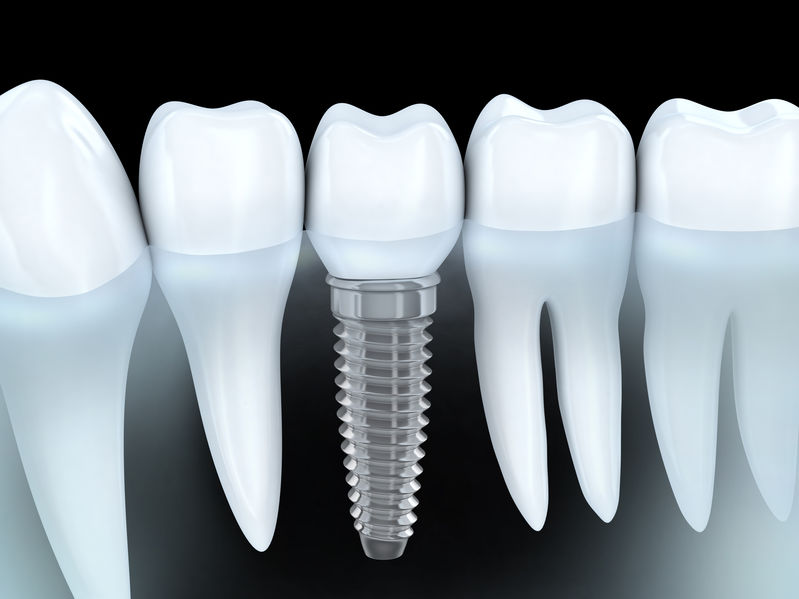Dental Implant Procedure
Performed as a stage out-patient procedure, the process of having dental implant will vary between patients. However, some of the most common steps of dental implants include:
- Diseased tooth removal.
- Jawbone preparation.
- Bone healing and growth.
- Placement of abutment
- Artificial tooth insertion.
Jaw Bone Grafting
If your jawbone is too soft or not thick enough, you might require jaw bone grafting prior to getting implants. Because of the force that goes into chewing, the dental implant will not stay secure if your jawbone isn’t stable. Bone grafts create a strong foundation for your implants.
There are several types of bone grafting materials used to rebuild your jawline. One option is using natural bone grafting from another location in your body. In addition, there are also synthetic types of bone grafts that can be used like bone substitute, which is just as strong as natural bone.
Be sure to talk to your dentist about which option is best for you.
Whether natural bone or a bone substitute is used, it can take several months for the transplanted bone to fuse. If you only need a minor amount of bone graft, that may be performed at the same time as the dental implant. However, the condition of your jawbone will determine how your dental implant procedure is performed.
Dental Implantation
Once your jawbone is deemed ready for implantation, your dentist will make an incision in your gum to expose the bone. Holes are then created in the bone where the metal post of the dental implant will be placed. Since the posts function like a natural tooth root, the post will be placed deep into the jawbone.
After this is completed, you’ll still have a gap where the missing teeth are. If needed, your dentist may give you a partial denture. Partial dentures are removable for cleaning and sleeping.
Once the post is secure in your jawbone, the osseointegration process will begin, During this time, your jawbone will grow and eventually unit with the surface of your dental implant. This process will take a few months but provides a solid foundation for your new teeth., just as the roots for your natural teeth do.
After osseointegration is complete, you might need additional surgery prior to placing the abutment. An abutment is a piece where the crown is attached. This part of the process is considered minor surgery and is usually performed under local anesthesia as an outpatient.
To successfully place the abutment, your dentist will reopen your gum to expose the implant. Then, the abutment is attached to the dental implant and then gum tissue is then closed around the abutment.
In some instances, the abutment will be implanted post when the post is implanted in your mouth. Keep in mind that since the abutment is just past the gum line, it will still be visible when you open your mouth.
Some patients don’t want the abutment being visible, so they prefer to have their abutments placed in separate procedures. After your abutments are placed, your gums will need time to heal for at least two weeks before a dental implant is placed.
Contact Orsatti Dental in San Antonio to learn more dental care, or to schedule an appointment with us!
Orsatti Dental is a San Antonio Dentist office, serving all of San Antonio! Orsatti Dental is located at 15303 Huebner Rd, San Antonio, TX 78248.
Follow Orsatti Dental in San Antonio on Facebook

